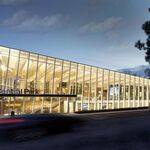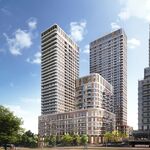micheal_can
Senior Member
It depends on what is being discussed. Some are talking about pax/commuter rail from Pembroke to Ottawa. In that regard, the former CP and CN routes are only proximate at Pembroke. South of that they diverge significantly. At some magic point, trying to knit together a bunch of abandoned (some very long abandoned) rights-of-way becomes greenfielding. Even north/west of Pembroke, the lines diverge.
OpenRailwayMap
OpenRailwayMap - An OpenStreetMap-based project for creating a map of the world's railway infrastructure.
 www.openrailwaymap.org
www.openrailwaymap.org
In terms of restored through service in the Ottawa Valley, the lack of need or freight service, including military movements, has already been demonstrated by the lines being abandoned. Without freight revenue, they/it would be a passenger route and I defy anybody to demonstrate how it would be financially feasible, even with public money. In all of the GO network, other than double tracking, how much virgin track have they laid? LSE? A doodlebug service between Pembroke and Ottawa hardly compares.
They could try to sell it as a way of bringing good paying jobs. Politicians love those photo ops. This is why a bus service run by the province would be best to start something.
Off topic but CF retention and recruit issues has multiple facets; housing costs in some locations being one. Another is spousal employment. The logic that transportation expansion (rail, road, etc.) and increased housing demand being a path to reduced hosing prices goes against just about everything history has shown.
If I was posted to PET and my wife wanted to work in Ottawa, that would be good for the marriage. Another scenario is people who work at NDHQ could live out there. The CAF could even build PMQs and help relieve the housing shortage.
Taking over private, for-profit bus companies would be a public policy decision. Actually, with deregulation, the government could simply start operating a bus line and just drive them out of business (that'll be good for votes).
I don't think it should surprise anyone that GO/Metrolinx is mandated to serve the GTA/GTHA/GGHA. If some government had proposed to fund a pan-provincial transit authority in 1967 they would have been laughed out of office. As an actual service provided, not just a policy or regulatory body, what should its bounds be? Maybe they should venture into Ottawa (it seems they couldn't do worse than the city) but I'm not sure if a single agency consisting of isolated service pockets is particularly efficient. Given the massive size of Ottawa, how much of the transit in the area is inter-jurisdictional.
Maybe a new agency within the MTO is created for the Ottawa area. Or, GO/Metrolinx's mandate is changed to cover all commuter service within the province. They do have the expertise.







